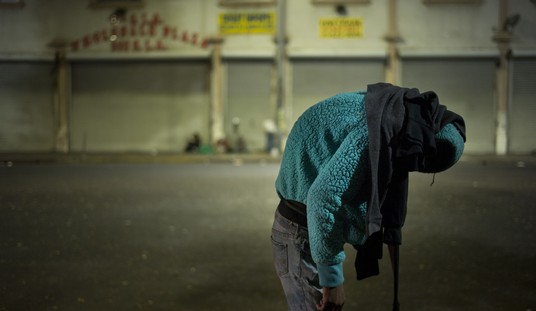I’ve asked movie and music industry insiders to explain their respective businesses to me, and never end up any smarter than I start out.
How can Lyle Lovett’s album sales amount to $0.00?
How can Return of the Jedi still be in the red?
Or take Ed Driscoll’s post last week called “Hollywood’s Special Effects Industry is in Crisis”:
As Life of Pi won the Oscar for Best Visual Effects, the venerable facility that created those effects – Rhythm & Hues – declared bankruptcy, and they’re hardly the first to close their doors due to financial problems. Debra Kaufman pulls from her 25 years of experience covering the industry to take a close look at how the creators of some of cinema’s indelible images are falling prey to dysfunctional business models.
As you’ve likely guessed, the bloated, ever-evolving technology required to bring those Jurassic Park raptors to virtual life is so costly, it burdens production companies with insurmountable debt.
We often read about how many weeks or months — or even years — it takes to create glossy special effects that last only seconds on screen.
Is that really a sound business model or a smart, efficient way to make anything?
I hear Buddhism is big in Hollywood, but surely they’re not basing their creative process on the making of sand mandalas — are they?
It wasn’t always like this…
It wasn’t always necessary — or even possible — to hire squadrons of SF artists and programmers to fool the eye.
For instance, my grandmother went to her grave insisting that in Jezebel (1938), her beloved Bette Davis had worn a scandalously scarlet gown to her Southern debutant ball, at which white dresses were a rigid tradition.
The trouble with my grandmother’s recollection?
The movie is black and white.
Yet the direction and screenplay and, of course, Davis’ imperious — and then humiliated — reaction to the scorn of her entire community painted that Orry-Kelly dress red in my grandmother’s mind, and that of countless moviegoers.
In a less famous but more impressive costuming accomplishment, try on Preston Sturgess’s Sullivan’s Travels (1941) for size:
Paramount had severe reservations about Sturges’ choice of Veronica Lake as female lead. (…) But Sturges stuck by his choice, even when he learned at the beginning of shooting that Lake was pregnant, which she had not revealed at audition. By June she was seven months pregnant, and top costume designer Edith Head was brought in to conceal her condition.
Her figure problems seemed insurmountable. She was short, like me, and very tiny–possibly the smallest normal adult I had ever seen. Her waist was the smallest in Hollywood, 20 3/4″. That was 5 1/2″ smaller than the average waist. Far from a designer’s dream like Dietrich or Lombard.
Yet everyone was telling me to make her into a sex symbol.
In her first film, Sullivan’s Travels (1941), I dressed her in gold lame and beaded gowns. She was sultry and an immediate hit. Veronica was married and was, unfortunately for me, very pregnant at the time we were making that film. The important question was: How do you photograph a girl so she does not appear pregnant? She can stand behind a piano. She can carry a large muff and you can assume it’s a winter picture. Or, what was most successful for Veronica, she can carry a huge fan. Sullivan’s Travels was full of these devices, but looking back there are still times when she looks like a pudgy, short girl– you can’t do a whole movie behind a muff, fan, or piano.
But by the end of the film I was an expert at concealing pregnancy.
I agree.
Would you have guessed that Lake was seven months pregnant if I hadn’t told you?
About 25 years ago, I was invited to a hip and new (as opposed to the many old and dingy) Greek restaurant on Toronto’s Danforth.
Sure enough, the place was gleaming, with a youthful vibe.
A novel touch at the time was the numerous big (for those days) TV screens wall-mounted at almost every sight line.
Even sitting close together, we had to yell to each other over the booming music.
Then we noticed that the noise in the room had faded, and wondered why.
Almost everyone in the restaurant was silently staring up at the screens, which were all showing the same movie:
In his Scrapbook, Harryhausen describes the skeleton sequence: “There were seven skeletons fighting three men, with each skeleton having seven appendages to move in each frame of film, this meant an unprecedented 35 animated movements had to be synchronized with three live actors’ movements; so one can readily see why it took four and a half months to record the sequence for the screen.”
The film’s most famous scene had begun a minute earlier, and as one person nudged another, these twenty and thirty year olds became mesmerized by a movie made before many of them were born.
Fans will fight forever over which creation was Ray Harryhausen’s finest.
The monster in 20 Million Miles to Earth, who has more personality than that of many human actors?
What about the destruction of Washington, D.C., in Earth vs. The Flying Saucers, which predates Independence Day by decades?
The word “iconic” is tossed about far too carelessly. In the case of Harryhausen’s patiently handcrafted effects, it fits perfectly.
https://www.youtube.com/watch?v=LWEo4M8nZQQ
A movie that marshals eye-popping special effects, precision editing, sophisticated action choreography, and diabolically elaborate sets to explore the nexus between dreams and reality. Sounds familiar, right? Well, it’s not Inception—it’s the 1924 silent comedy Sherlock Jr., directed by Buster Keaton. (…)
Half a century before Christopher Nolan was born, and long before CGI, Keaton created a vivid world with its own laws and internally consistent logic. Call it the inception of Inception—it probably left just as many folks scratching their heads on the way out.
If you want to know in more detail how Harold Lloyd shot Safety Last (1923), knock yourself out.
And here’s an affectionate and informative essay about Buster Keaton.
But honestly?
There’s nothing I can say that will do justice to what you see in these two videos.
No matter how jaded you’ve been made by CGI — the good and the bad — if you aren’t amazed, there’s something wrong with you.











Join the conversation as a VIP Member